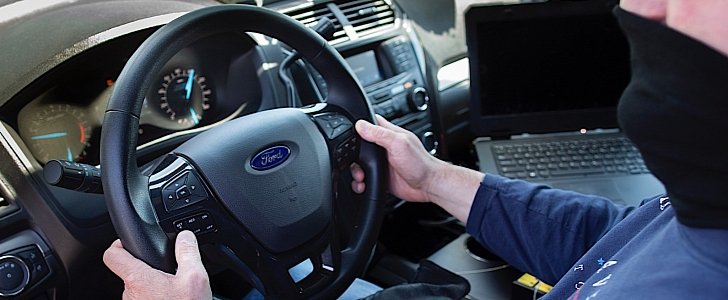For most people, a hot car is one of the nastiest things on this planet. Millions have been spent over the years to find solutions to drop the interior temperature to bearable levels during the hot summer days, and now that there are workarounds for that, Ford is trying to do the exact opposite: get cars hotter than Death Valley.
Yes, really. In a surprise statement released on Wednesday (May 27), Ford said its Police Interceptor Utility SUVs now have the capability to heat themselves to up to 133 degrees Fahrenheit (56 degrees Celsius).
Why? To fight this virus that won’t go away, that’s why.
This idea, which at first glance seems to be something President Donald Trump might suggest - after all, the man did say people could be treated internally with disinfectant and light - but Ford claims there’s some science behind it: with the help of the The Ohio State University, the carmaker determined the best way to kill the virus is to bake it.
And baking it shall be. With the help of a new software that can be rolled out immediately to Interceptors around the world (model years 2013 – 2019), the inside temperature can be raised by means of the car’s climate system to the said temperature, which is maintained for 15 minutes. Preferably, without the police officer inside when that happens.
That should spell doom for the virus, Ford claims, and the claim is backed by the said University and some tests that have been conducted in vehicles owned by several police departments.
“Our studies with Ford Motor Company indicate that exposing coronaviruses to temperatures of 56 degrees Celsius, or 132.8 degrees Fahrenheit, for 15 minutes reduces the viral concentration by greater than 99 percent on interior surfaces and materials used inside Police Interceptor Utility vehicles,” said Jeff Jahnes and Jesse Kwiek, laboratory supervisors at The Ohio State University department of microbiology.
Why this great solution has been envisioned for police vehicles only, that’s anybody’s guess.
Why? To fight this virus that won’t go away, that’s why.
This idea, which at first glance seems to be something President Donald Trump might suggest - after all, the man did say people could be treated internally with disinfectant and light - but Ford claims there’s some science behind it: with the help of the The Ohio State University, the carmaker determined the best way to kill the virus is to bake it.
And baking it shall be. With the help of a new software that can be rolled out immediately to Interceptors around the world (model years 2013 – 2019), the inside temperature can be raised by means of the car’s climate system to the said temperature, which is maintained for 15 minutes. Preferably, without the police officer inside when that happens.
That should spell doom for the virus, Ford claims, and the claim is backed by the said University and some tests that have been conducted in vehicles owned by several police departments.
“Our studies with Ford Motor Company indicate that exposing coronaviruses to temperatures of 56 degrees Celsius, or 132.8 degrees Fahrenheit, for 15 minutes reduces the viral concentration by greater than 99 percent on interior surfaces and materials used inside Police Interceptor Utility vehicles,” said Jeff Jahnes and Jesse Kwiek, laboratory supervisors at The Ohio State University department of microbiology.
Why this great solution has been envisioned for police vehicles only, that’s anybody’s guess.







